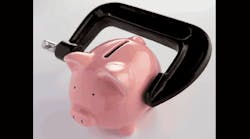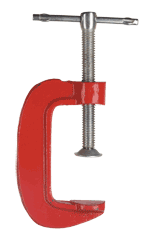The U.S. Roadmap for Material Handling & Logistics, a recent industry effort led by MHI and supported by five association partners and eight publication partners (including Material Handling & Logistics), presented its preliminary major findings covering items such as e-commerce, Big Data and predictive/prescriptive analytics, the changing workforce, sustainability and much more. One area deserving more discussion was how manufacturers could grow their businesses internationally, either through the export of American built products or through the production of products overseas.
It is estimated that the economies of 70% of the world's population is supported by only 25% of the world's manufacturers. The other 75% of manufacturers are concentrated in the highly developed economies of the U.S., EU, Japan and a few other countries. Making matters even starker, it is estimated that of the aforementioned 70% of the world population, referred to as emerging markets (EMs), 90% of manufacturers concentrate on supporting only an estimated 10% of the population of the EMs. Stated another way, the economies of 63% of the world's population is supported by only 2.5% of the world's manufacturers.
This article will discuss a new business model, focused on delivering material handling equipment (MHE) solutions to EMs that will complement the model currently driving the annual $25 billion U.S. market for MHE sales. We'll also cover the annual $10 billion of product support driven revenues sustaining the estimated U.S. $250 billion (at current replacement value) installed base of MHE. This new business model, focused primarily on serving EMs in a new way, incorporates the concept of a "Frugal Product (FP)."
Changing Old Ways
The legacy business model of the U.S. MHE industry regarding EMs is either to position itself to have a minimum presence in an EM or to provide primarily older product designs employed by advanced economies that are either imported or jointly manufactured with an EM partner. The attitude of the U.S. MHE industry is that for the most part EMs "can't afford our stuff."
The new business model attempts to deliver to the majority of EM end-users, from China, to India, to Indonesia, to Nigeria and beyond, affordable alternatives to the currently unaffordable Total Cost of Ownership (TCO) material handling solutions being supplied by U.S.-based OEMs.
• Product sale price of OEM to end-users;
• Product development;
• Cost of manufacturing (i.e., direct labor, direct materials and indirect);
• Warranty;
• Product launch;
• Establishment of a product support enterprise (i.e., tech manuals, repair shops, parts distributors, field service representatives);
• Distribution;
• Product employment costs to end-user;
• Acceptance;
• Operational (i.e., operator salary, fuel);
• Product support (i.e. planned/unplanned maintenance, overhaul, upgrades);
• Investment opportunity costs to end-user (i.e., bank loan for equipment purchase, spare parts investment);
• Product removal costs to end-user;
• Product residual value returned to end-user.
Attacking Traditional TCO
The FP business model is a reversal of current American-based product design concepts. Instead of embracing the complexity employed by the more developed markets, it reduces the capabilities of products down to a few basic elements; it eliminates all the bells-and-whistles that often do not add much value to the end-user, but can significantly impact the TCO.
For example GE, an early adopter of the FP business model for a variety of their enterprises, designs and manufactures medical hardware separately for developed economies and EMs. At $1,000, its handheld electrocardiogram device sold in EMs, costs 10% of the price of its American-designed counterpart with both products enabling doctors to diagnose conditions such as heart disease equally. Carlos Haertel, managing director of GE's European Global Research Center explains GE's FP version "can be carried out to remote villages on the back of a motorbike and yet be of the highest quality/reliability." Also note that the FP was developed to minimize energy requirements and to have a simple back-up source; in EMs electricity is often not available or highly unreliable.
Side note: complexity of design often inspires U.S.-based design engineers to believe that they have configured a "sexy" product, rather than the "simple" and "boring" product embraced in the FP business model.
Off the Shelf or 3-D?
Another area in which FP reduces manufacturing costs is its predominant employment of commercial off the shelf items; they often have lower costs, higher reliability and a longer supply chain life than that of organically designed and/or manufactured parts.
Also by keeping the design simple, fewer parts are required, which reduces direct material costs and direct labor assembling costs, as well as quality-driven warranty issues. One area which will be embraced by FP designers will be the employment of 3D/additive manufacturing to create out-of-the-box components or structures.
Supply Chain Benefits
All the above effects of the FP business model upon manufacturing increases raw material and finished goods inventory turns by an estimated 20-50% as compared to that of a non-FP business model.
The FP business model requires a simplified and less resource intensive product support enterprise: less sophisticated in-field test equipment, less tech rep training and salaries, smaller need to create stand-alone product repair shops and reduced update/upgrade requirements.
It is estimated that the FP business model product support costs drop by the corresponding 50-90% product cost reduction of a legacy product. For example if a non-FP acquisition cost is $1,000, product support annual costs average an estimated $50, while a FP, with a buy cost of $200, will have an estimated annual average product support expenditure of $10.
Also it is estimated that the product support parts investment turnover would increase 15-25%. Not only is the product frugally designed, but its manufacturing and product support supply chains are materially leaner.
Designed for Remanufacture
One of the interesting aspects of designing a product from the ground-up is that the concept of design-for-remanufacturing can be employed. DFR can truly be a game changer in EMs. Physical life extensions can be planned by designing a product to be easily disassembled, easily modified/upgraded and then reassembled.
For example, if a MHE FP is planned to be inducted in a remanufacturing process every 7 years, and 75% of its value added is designed to be retained for each time it is remanufactured and the product has a planned life of 21 years, the depreciation, and its ensuing impact upon TCO, would be materially reduced.
DFR is also great to apply to FP MHEs that are employed in daily rental pools. With lower depreciation costs, coupled with lower operating costs and the ability to pay-per-use, MHE affordability would materially increase in EMs.
Over the longer term U.S.-based manufacturers will have to compete with the growing army of multinationals based in EMs. A report from management consultants McKinsey last year found that "EM-focused companies are often more nimble and faster-growing than their Western counterparts, even when both operate in an EM where neither is based. In such markets, between 1999 and 2008, EM firms grew at a 30.7% annual clip, whereas their developed-market rivals managed 12.6%."
Though the FP business model is driven by lower unit prices, resulting in lower unit profits, but with significantly higher unit demand, total profits could become important to U.S.-based OEMs engaged in EMs.
Deere Rethinking Frugal
Deere & Co. is an example of a U.S.-based OEM that experienced the game-changing impact of the FP business model. It developed a frugal tractor for the Indian market, but assumed the FP business model would only apply to an EM such as India. During the same period that Deere employed their FP business model, an Indian competitor, Mahindra & Mahindra, did the same, but with one difference: they imported their own frugal tractor to the U.S. and began taking market share away from Deere.
Deere is now in the process of rethinking their global marketing strategy.
In conclusion, the U.S.-based MHE industry will have to take a serious look at the FP business model as an enabler of future profit growth. Top management involvement, supply chains, design engineering and much more need to be changed for crossing the chasm to the FP business model for EMs…and ultimately for the developed economies.
Ron Giuntini is a consultant and principal of Giuntini & Co., Inc. and a member of MH&L's Editorial Advisory Board.




